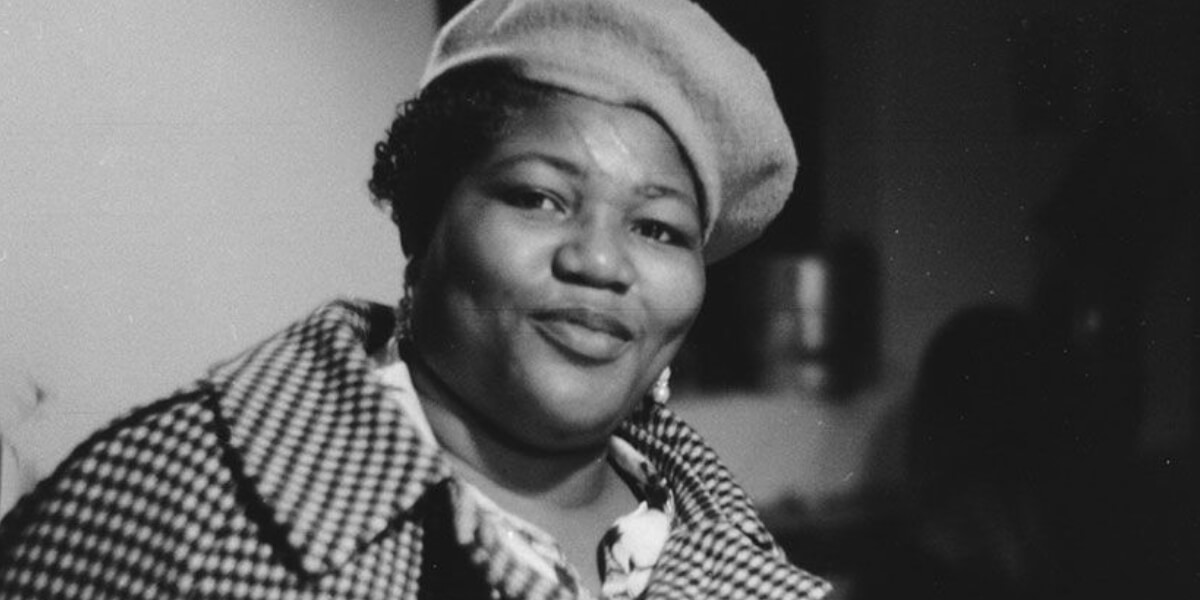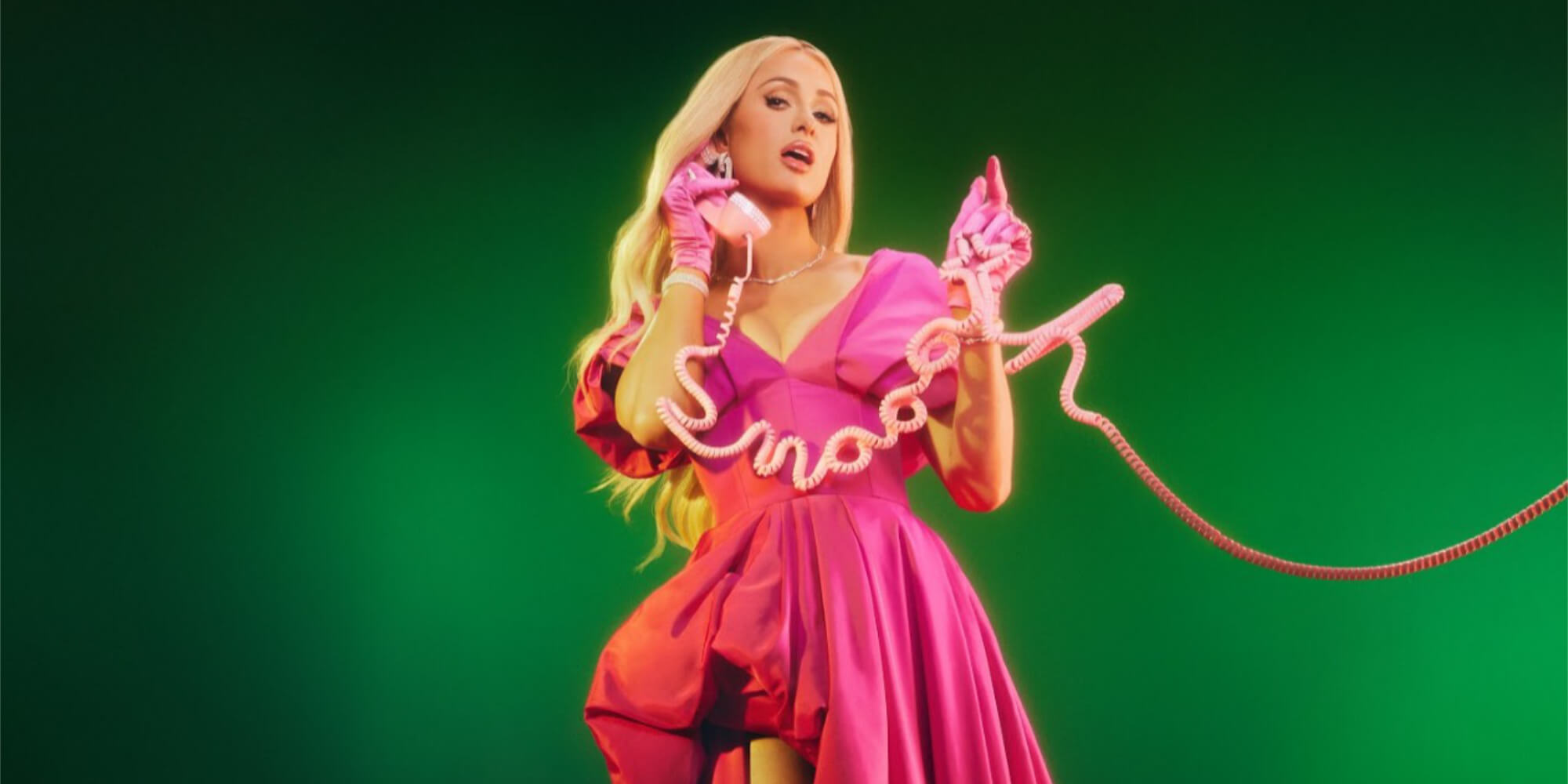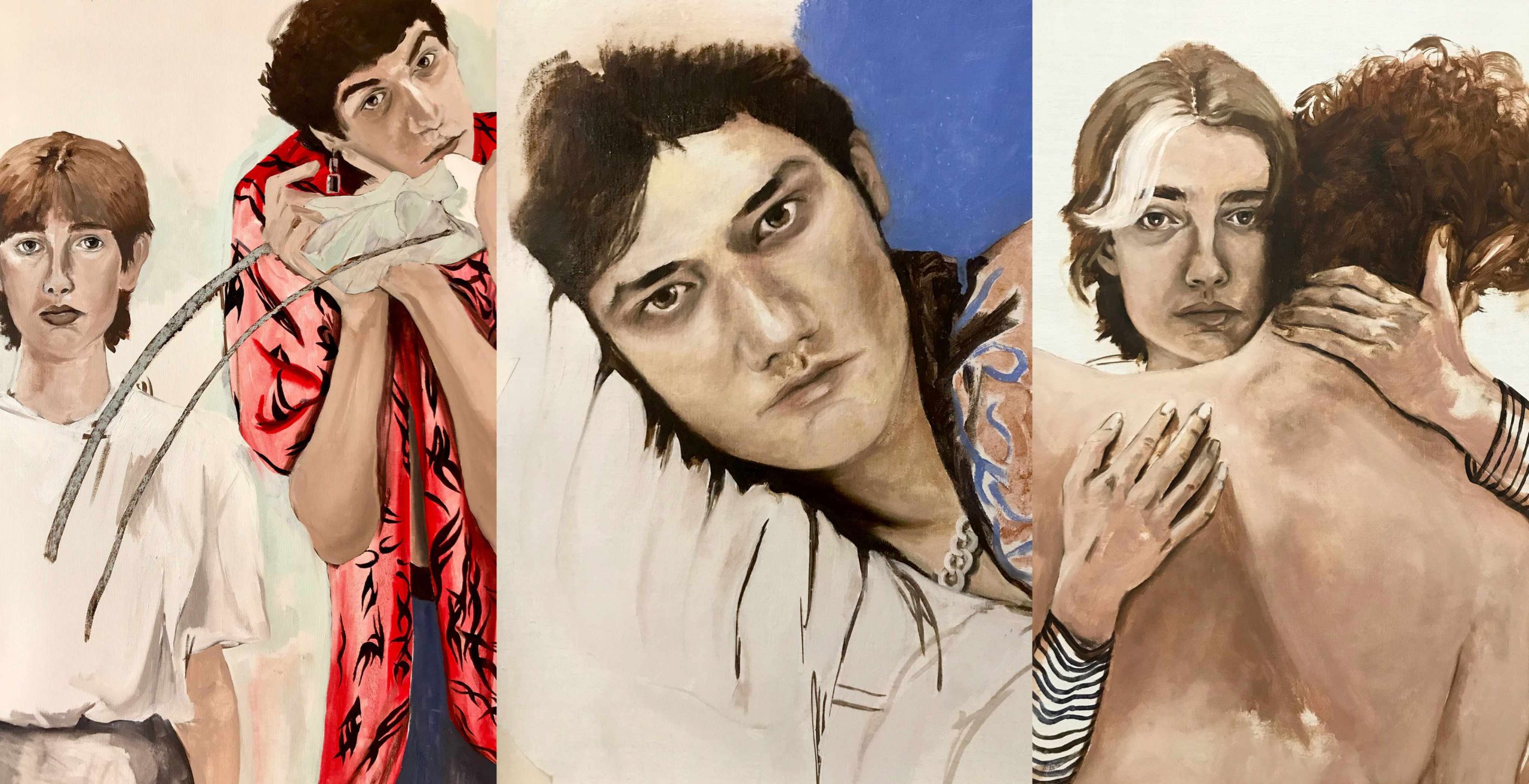Who was Willie Mae “Big Mama” Thornton?
Willie Mae ‘Big Mama’ Thornton was born on 11 December 1926 in Alabama into a family of seven children. Her father was a minister in a Baptist church and her mother was a singer in the congregation. After losing her mother to tuberculosis at a very young age, Thornton had to swap school attendance for a cleaning job in a local pub. She taught herself to play the harmonica by watching her older brother, Calliope ‘Harp’ Thornton. She learned to sing from her role models Bessie Smith and Memphis Minnie, both famous rhythm and blues singers. She also taught herself to play the drums – a woman of many talents.
At age fourteen, Thornton was encouraged to attend an audition, which eventually led to her discovery, and later, toured with Sammy Green’s Hot Harlem Revue. After seven years of touring the country, Thornton settled down in Houston where she had regular singing gigs, got signed to Peacock Records label, and carried on touring. The audience was mesmerized by her captivating stage presence, forceful vocals, and grit, as well as her mainly dressed up in suits. In her Essay, “The Sound of Race and Gender Transgression in Rock and Roll”, Maureen Mahon points out the uniqueness of Thornton’s style of dress for the time: “This choice is evidence of an unconventional, transgressive and liberated form of black femininity that defies prevailing expectations about how women should behave in order to command respect”.
The Story behind “Hound Dog”
In 1952, Thornton recorded the single “Hound Dog”, specifically written for her by Jerry Leiber and Mike Stoller. After having met the singer for the first time, both Leiber and Stoller were fascinated by her larger-than-life stage presence and ended up writing the song in only fifteen minutes. Big Mama Thornton’s iconic line from “Hound Dog” was not just a catchy refrain but a powerful statement of female independence: “You ain’t nothing but a hound dog, quit snoopin’ round my door. You can wag your tail, but I ain’t gonna feed you no more”. As Maureen Mahon explains, “Commanding a man to wag his tail marks a gender-role reversal that encapsulated the disruptive and dangerous form of femininity that Thornton embodied”.
The song sold over half a million copies, stayed in the R&B charts for 14 weeks and remained at number one for seven weeks. In an interview with the Arhoolie Foundation, Thornton herself commented on this: ”I just turned the radio on in the car. And the man said, ‘Here’s a record that’s going nationwide – ‘Hound Dog’ by Willie Mae Thornton.’ I said, ‘That’s me! I hadn’t heard the song in so long”. Although the record was a success, the singer only earned $500 from “Hound Dog”. Thornton was never fully granted the rights to the song. Rolling Stone Magazine quotes her as saying, “[I] didn’t get any money from them at all. Everybody lives in a house but me. I’m just livin’.”
Three years after its release, Elvis Presley recorded his version of “Hound Dog”, a huge commercial success selling more than ten million copies. In this cover version by Freddie Bell and the Bellboys, the lyrics are no longer about gaining independence from a cheating partner, it’s about a dog that disobeys its master. Presley sang, “You ain’t never caught a rabbit and you ain’t no friend of mine”. Elvis took the essence of a song that was about the liberation of black womanhood and turned it into a male-centered, washed-out song, catering to a white audience.
Racial segregation still prevailed during this time – the Civil Rights Act wasn’t passed until 1964. Elvis’ cover of “Hound Dog” ultimately launched his career, later hailed as the so-called “King of Rock and Roll”. Thornton commented: “I’ve been singing way before Elvis Presley was born, and he jumps up and becomes a millionaire before me … off of something that I made popular. […] He makes a million and all this jive because his face is different from mine.”
Thornton faced another setback with her song “Ball ‘n’ Chain”, which she wrote and recorded in 1960 for Bay-Tone Records. The label decided to delay its release until 1986 while holding on to the copyrights of the song. Thornton missed out on the royalties when Janis Joplin recorded the song in 1967. In an attempt to make amends, Joplin, who had previously cited Thornton as an influence, invited her to tour as the opening act. By 1968, Thornton began receiving royalties and Joplin’s version of the song sparked renewed interest in her career, although still far from the recognition she deserved.
In 1984, the incredibly gifted Willie Mae Thornton died penniless in a Los Angeles boarding house after suffering heart and liver disorders due to her struggle with alcoholism. Last October, nearly a hundred years after Thornton’s birth, she was finally inducted into the Rock and Roll Hall of Fame in the category “Musical Influence” alongside Mary J. Blige and A Tribe Called Quest. Deanna Nebel, Education and Content Supervisor for the Rock & Roll Hall of Fame, emphasizes that Thornton challenged societal norms not just through her powerful sound but also through her bold fashion choices. She wore men’s clothing, something that attracted attention and criticism in the 1940s and 50s: “She broke the mold in terms of what people thought a Black or African American woman should or shouldn’t be doing.”
The Exploitation of Black Talent
Willie Mae Thornton’s story is indicative of the broader phenomenon of black artists being made invisible, particularly black women. While white and non-black artists reap the fruits of the labor and creativity of black artists, the true creators are sidelined and made to observe the success of other artists from a position of marginality. They receive no financial compensation or recognition, at least not in their lifetime.
During the Second World War, record materials were in short supply and major labels prioritized white artists drastically cutting back on blues, jazz, and gospel. By the 1950s, white musicians were regularly covering Black artists’ songs and gaining the financial benefits. For example, Etta James’ hit record “The Wallflower” sold over 400,000 copies, but when white singer Georgia Gibbs recorded a version, it sold over a million. This was a common industry practice that ensured white artists received greater exposure and success. Theresa Brewer covered the music of LaVern Baker. Ruth Brown, Jackie Wilson, Bill Haley, Fats Domino, and the Flamingos saw their work repackaged for white audiences.
White artists have been “editing”, “covering”, and profiting from Black music since the 19th century. Cultural critic Margo Jefferson called this “Jim Crowing”, referencing the 1829 song “Jump Jim Crow”, performed by a former enslaved man. A white entertainer, Thomas ‘Daddy’ Rice, copied and popularized the song while performing in blackface, gaining fame and fortune at the expense of its original creator.
In recent years there has been a debate over the term urban within the music industry, spotlighting deeper systemic inequalities. While some see the term as limiting Black artists, others argue it has historically given Black executives a platform. The issue isn’t just terminology, it’s the structural inequality in music marketing. Regardless of labels, Black artists are still pushed into niche categories while white artists performing similar styles are promoted as pop to a broader audience. The result? White artists profit disproportionately from Black music traditions, while Black artists face systemic barriers to reaching mainstream audiences.




























